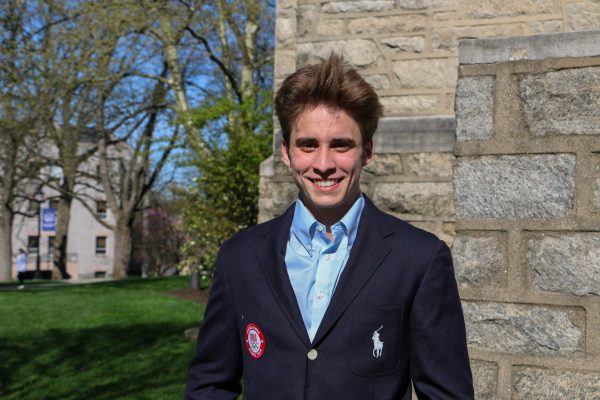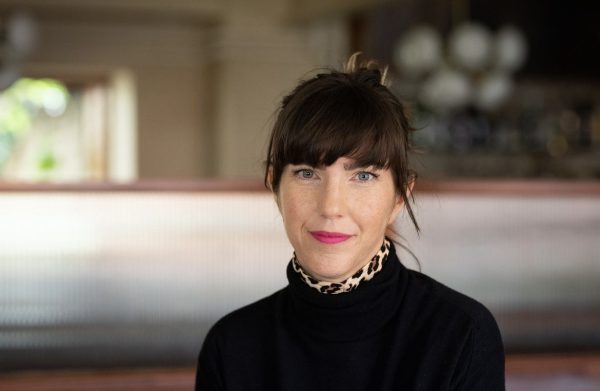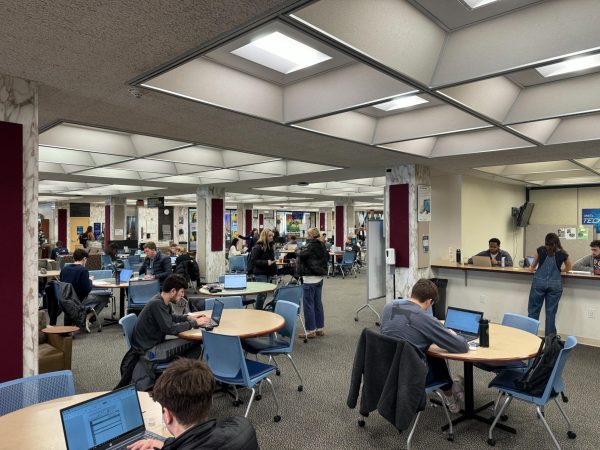Mental health concerns increase, universities must respond
March 19, 2015
For the past two decades, mental health on college campuses has become an increasing concern across the United States. More and more students report depression, anxiety and other symptoms of mental illness, and they are turning to their university health centers for support.
According to a 2010 survey by the American College Health Association, 45.6 percent of surveyed students reported feeling that “things were hopeless” and 30.7 percent reported feeling “so depressed that it was difficult to function” within the past year. The American Psychological Association also reported that 91 percent of college counseling center directors agreed that the trend towards greater numbers of students with “severe psychological problems” is evident on their campuses.
With these figures in mind, it is important to note that not all scholars believe this trend to be representative of an actual increase in mental health issues. Frank Arricale, a counselor at Villanova, said that evidence indicates “more and more individuals are forthcoming about their mental health issues, more willing to discuss them with each other, and more willing to seek help for them.”
According to Arricale, the increase in awareness and acceptance is causing greater numbers of students to use mental health services. He agrees that part of the rise may be due to a “complex combination of individual, family and societal factors,” but thinks that the decrease in stigma surrounding mental illness is a main contributor.
Regardless of the cause, more students are seeking out mental health services than before, which mean that schools are now being scrutinized for how they support and aid these students.
A 2014 Newsweek article by Katie Baker reported that Princeton University, University of California at Santa Barbara, George Washington University and City University of New York have all come under fire for their callous responses towards students who were severely depressed or had attempted suicide.
For example, at Princeton, a student named Dan swallowed 20 Trazodone pills one night, then checked himself into the campus health center and was sent to a nearby hospital. After staying at the hospital for three days, Dan received a voicemail from the director of student life who told him he was “evicted from his dorm room…and was prohibited from setting foot on campus.”
Dan’s treatment highlights one of the major criticisms of how some universities handle suicidal students, by avoiding liability.
According to the Suicide Prevention Resource Center, suicide is the leading cause of death of undergraduates. In 2012, 6.6 percent of students reported having contemplated suicide in the past year, and 1.1 percent of students reported having attempted it. If campuses do not develop a detailed and thoughtful way to address these issues, along with depression, anxiety and others, they will be alienating hundreds of students who need their help the most.
Villanova’s counseling center is staffed with 10 counselors and operates from 9 a.m.–5 p.m., Monday through Friday. The University Health Center is also available to students who suffer a mental health crisis and is open at all hours, seven days a week, while classes are in session.
According to Arricale, Villanova’s counseling center serves around 14 percent of the undergraduate population and 10 percent of the overall university population annually, which exceeds the national average. The center offers free individual counseling on a short term basis, limited to around 10 sessions. Arricale said that the average student participates in a total of four to five sessions provided on a once-a-week basis. For students who need longer or more intensive treatment, the counseling center provides “evaluation, consultation and referral services to help them get connected to appropriate settings.”
Aside from the services provided at the center, the Office of Health Promotion also hosts around 50 “educational and awareness-raising activities and presentations” related to mental health issues annually. Residence Life and the Student Health Center disseminate information about mental health and staff a booth during Orientation to answer questions. The Executive Director and the Associate Director of the center also present to parents about the resources available to their children.
All of this highlights the resources the University provides to help students with mental health issues. But some students are not sure that the Counseling Center and the University in general is doing the best job they can to suit students’ needs.
John, a student at Villanova, has suffered from depression and anxiety for most of his life. He has had suicidal thoughts and last September he suffered a panic attack late at night. He went to the Health Center, stayed the night and saw a counselor in the morning.
After John met with the counselor he said that the University “would not and could not provide me services” and he would have to seek off-campus assistance. He was required to find a therapist off-campus who accepted his insurance as well as find a way get there consistently, even though he did not have a car.
“I was told that if I did not find someone off-campus, they would make me take a leave of absence from school” John said. “They did not seem to have sympathy for my situation.”
John did say that the person he found through the counseling center did help him “a great deal,” but he still felt dissatisfied with how quickly the counseling center had turned him away and told him they could not help him. “It takes a lot for someone to even walk into that office,” John said, “but to then be told they can’t receive help for as long as they need, it could be devastating.”
Every counseling center has to balance the availability of funds and staff with students’ needs. It is not feasible for Villanova to offer unlimited counseling to every individual who needs it, but John would have much preferred starting with on-campus counseling instead of attempting to find rides and potentially pay money for a service that is offered freely to other students.
“The Counseling Center needs more assistance,” John said. “I don’t know the money it has or the staff size but if they have to limit students in their treatment, then it cannot be effective.”
Another student, Steven, was also displeased with how the counseling center handled his issues. Steven suffers from “clinical depression and anxiety” as well as suicidal thoughts, but never mentioned it to anyone due to a fear of being judged. Towards the end of his sophomore year, Steven told his mother about his mental health issues and she was extremely concerned. She contacted public safety who took Steven to the counseling center.
The counselor Steven spoke to recommended he take a leave of absence for the summer. He was reevaluated and allowed to return for the past fall semester where he was required to see a counselor at the center every week. However, these meetings only happened every other week because the Counseling Center told Steven that they were “seeing too many students and couldn’t accommodate weekly sessions for [him].”
During these sessions, Steven was hesitant to open up about his issues because he knew the counselor was sending reports on his progress to several deans, as well as the athletic director. “Because I wasn’t comfortable being completely honest, by the time second semester came around my mood worsened quite a bit and I began having thoughts of suicide again,” Steven said.
At that point, the school asked Steven to leave for an entire semester, which was the outcome he was trying so hard to avoid. “I felt like I was being punished again for something beyond my control,” Steven said.
Steven has complicated feelings towards the mental health services at the University. On the one hand, he believes the University is trying to do the right thing by providing these services to students who need them. On the other hand, Steven felt abandoned by the school when he needed that security the most and he still does not understand why he was forced to leave school if his grades were not suffering.
“When I had to take a leave of absence over the summer, I was pretty much treated like someone who had been suspended,” Steven said. “I was withdrawn from my classes for the next semester, I was told that I was forbidden to be on campus, and I had to go through this long, stressful process of showing the school I was healthy enough to be on campus.”
Steven said that tough summer made his depression worse and made him regret saying anything about it. “I felt like I was at fault for having a mental illness because Villanova was putting my whole academic future up in the air…to me, it seemed like the school was more worried about being liable for a mentally ill student hurting themselves or others than actually helping that student deal with their mental illness.”
It is a fine line that universities must identify between doing what is deemed best for the individual student and what it is they believe is best for those around him or her. From Steven’s perspective, the university could have served his needs much better. He felt pressured to have his mental health improve, because if it did not, he could not continue his education. This pressure, along with the reports to administrators, did not allow him to be honest about his issues, and subsequently his mental health suffered.
“Had the counseling services created an environment where the things that I mentioned weren’t shared with the school administration, I would have been able to deal with my issues,” Steven said. “Instead, I was afraid to open up about any difficulties in fear of the school thinking I wasn’t mentally healthy enough to be at school.”
Clearly, this was not the counseling center’s goal. Nevertheless, Steven and John both felt the mental health services at the University were not serving them. They felt isolated by the process and the rules set in place, rules that are undoubtedly there to help serve a greater purpose. The question is whether these rules serve the purpose of the University or the student?
This is not to say that no students benefit from the counseling services provided at Villanova. On the contrary, many students like Sarah, who suffers from generalized anxiety disorder, have had positive experiences. When Sarah first went to the counseling center she said, “The counselor had no opinion or judgment and just allowed me to get it off my chest and helped me relieve that burden that I was keeping in.” Sarah used the counseling center twice and believes those sessions, along with prescribed medication from her doctor at home, has helped her.
Both Steven and John acknowledge that the counseling center does some good for many students on campus. But they also believe that it could be doing more to aid those suffering from mental illness. For one, both Steven and John think there is still a large stigma around mental illness.
“Villanova needs to figure out a way to raise awareness about how mental illness affects students and show students that are experiencing mental health problems that they would be better off seeking help,” Steven said.
John agrees and said more specifically that “mental health issues are something only addressed during orientation and on the Stall-Street journal. Support groups for people struggling with mental illness are not readily advertised and the only major resource, the counseling center, has 9-5 hours, which can be difficult for students to receive help with classes, work and activities.”
Arricale, who has been at Villanova for 15 years, said that “Villanova students vastly prefer individual services to group services.” He also said that if there is a stigma surrounding mental illness, “there’s far less than there used to be.” For Steven, John, and Sarah, however, this is not the case.
“Whenever someone mentions that they are having suicidal thoughts, there is always a person who calls them ‘selfish’ or a ‘coward’ for feeling that way,” Steven said. Sarah also believes that many people are uneducated about mental issues: “They just don’t understand what people like me go through on a daily basis.”
This stigma and fear of being judged are still barriers for people who are afraid to get the help they need. According to the National Institute of Mental Health, 61.5 million American adults experienced some form of mental illness in 2013, yet 60 percent of them did not seek any medical treatment. Potentially thousands of college students are still not seeking treatment for the mental health issues they suffer. Experiences like those of John and Steven can dissuade those who need treatment from pursuing it, and it is a university’s responsibility to take students’ feedback into consideration and improve their services.











